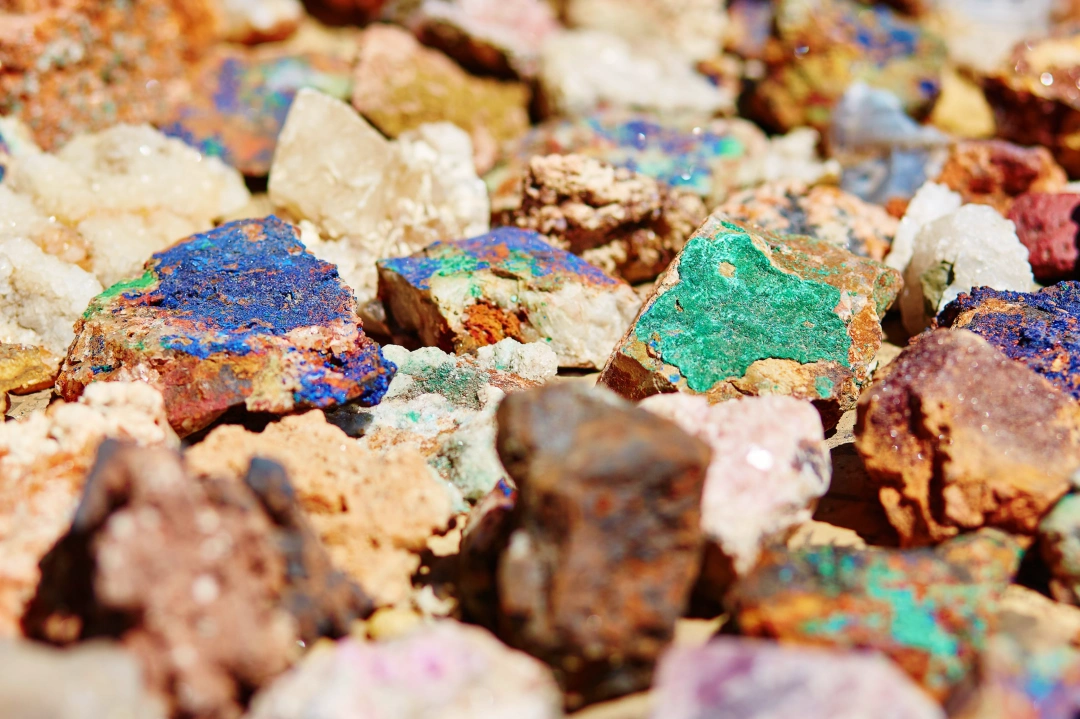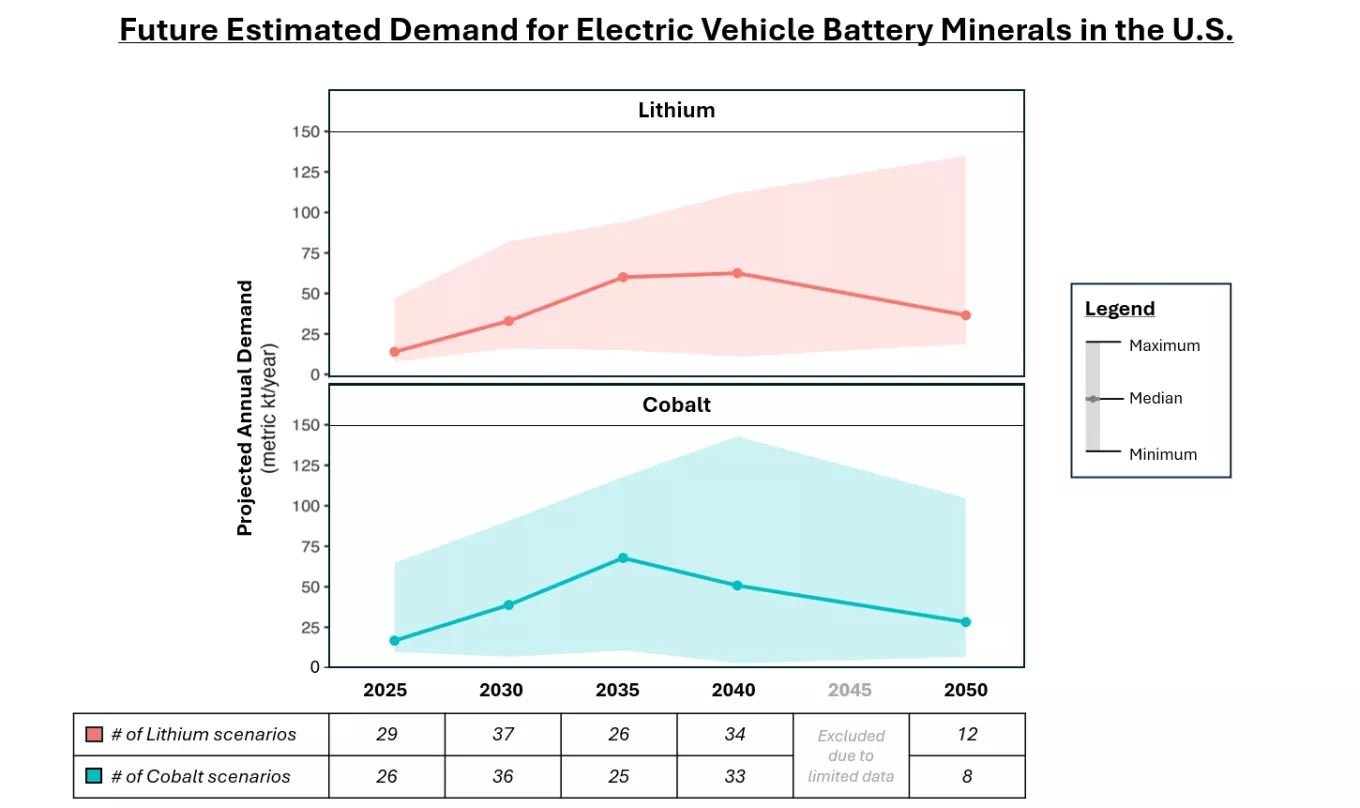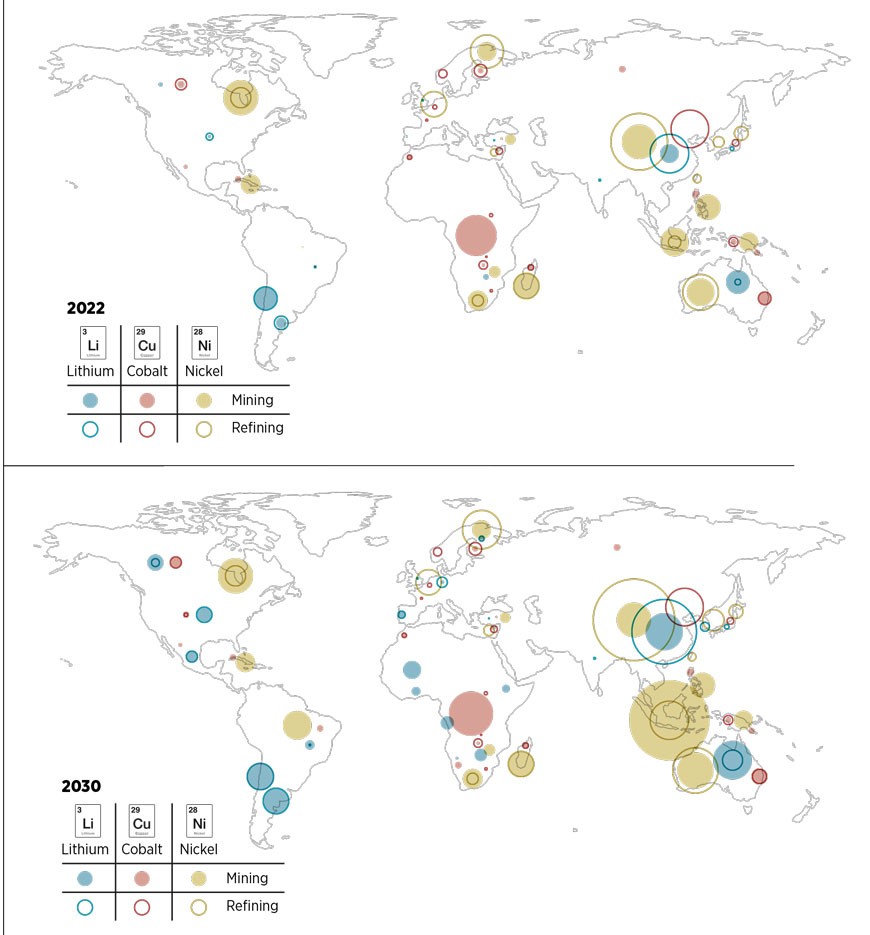
The transition to renewable energy requires more than wind, solar, and other clean energy technologies; it depends on critical minerals such as lithium, cobalt, nickel, and rare earth elements. These minerals are fundamental to the production of energy storage systems, electric vehicles (EVs), and other renewable infrastructure, but their availability has become a key concern. Without these critical minerals, the renewable energy sector would struggle to grow at the scale needed to meet global decarbonization goals.

The International Energy Agency (IEA) has warned of a potential shortage of critical minerals as demand grows. For example, the need for lithium is projected to increase 42-fold by 2040, while demand for cobalt could increase by 21 times.
The global mining and processing of critical materials is highly concentrated, with a few countries leading in both resource extraction and refinement. Australia dominates in lithium mining, Chile in copper and lithium, China in graphite and rare earths, the Democratic Republic of Congo in cobalt, Indonesia in nickel, and South Africa in platinum and iridium. This concentration intensifies at the processing stage, where China commands 100% of refined natural graphite and dysprosium supply, 70% of cobalt, and nearly 60% of lithium and manganese.

The trade value of critical materials is vastly smaller than that of fossil fuels. Unlike oil, most critical materials are rarely traded on exchanges, reducing opportunities to hedge against price fluctuations. This absence, however, positions commodity traders as essential intermediaries, connecting producers with consumers.
In response, countries and regions like the European Union and the United States are working to build secure, transparent, and sustainable supply chains for these minerals, both to support their energy goals and to reduce reliance on regions with significant market control, particularly China.
The European Union, as part of its Green Deal and commitment to carbon neutrality by 2050, is establishing a platform for purchasing critical minerals and energy. This platform aims to standardize the sourcing of minerals, ensuring that they come from sustainable and transparent supply chains. This effort is crucial for Europe, as the EU imports over 75% of its mineral needs. By establishing a unified marketplace, the EU hopes to reduce costs, mitigate supply risks, and establish relationships with reliable mining nations, many of which have stronger environmental and labor standards.
This initiative is expected to streamline mineral procurement across the bloc, making it easier for European industries to access essential minerals and enhancing the EU’s standing as a leader in sustainable energy development. By working collectively, EU member states can more effectively address supply chain disruptions and establish a secure supply of the materials needed for renewable technology.
The United States is also taking a proactive approach, establishing a mineral marketplace in partnership with key allies, including Canada, Australia, and other mineral-rich and resource-aligned nations. This marketplace seeks to create a standardized, transparent, and secure supply chain for minerals essential to clean energy production. The motivation for this effort is twofold: to support the energy transition and to reduce dependence on China, which currently dominates the production and processing of many critical minerals.
This marketplace will also emphasize sourcing from countries that meet high environmental, social, and governance (ESG) standards, ensuring that critical minerals are produced responsibly. In addition to diversifying the supply chain, the marketplace aims to stimulate investment in mineral exploration and development within allied nations. By aligning with countries that share similar values and standards, the U.S. and its allies hope to create a resilient supply chain that can withstand geopolitical tensions and reduce global dependence on a single supplier.
The U.S. Geological Survey (USGS) recently revealed a potentially vast lithium deposit in southern Arkansas, where ancient brine deposits are estimated to hold between 5 and 19 million tons of lithium. This deposit could supply enough lithium to meet global demand for EV batteries many times over, providing a valuable domestic source for the U.S. energy transition. Often called “white gold,” lithium is a key component in lithium-ion batteries, which power most EVs and are crucial for renewable energy storage solutions.
The discovery in Arkansas has the potential to significantly reduce the U.S.’s reliance on foreign lithium supplies. Extracting this lithium will require innovative methods, as it is embedded in deep brine deposits, but the potential reward is substantial. Developing this resource aligns with the U.S.’s broader goals to secure a domestic supply chain for critical minerals, helping to avoid future shortages and control pricing pressures from overseas markets.
To further reduce reliance on China, the U.S. is exploring several strategies to expand its critical mineral resources and processing capabilities:
1. Increased Funding for Domestic Mining and Processing: The U.S. government has invested in domestic mining projects for critical minerals, particularly lithium, cobalt, and nickel. Through funding from the Department of Energy and the Department of Defense, these projects aim to support the domestic production of minerals essential to renewable energy.
2. Strategic Partnerships with Resource-Rich Nations: In addition to its mineral marketplace with allies, the U.S. is also forming partnerships with countries in Africa and South America that have abundant critical mineral resources, such as Brazil, Peru, Argentina, and Chile. These partnerships aim to secure supply chains and create economic opportunities in mining communities.
3. Support for Recycling Technologies: Another strategy the U.S. is pursuing is to develop advanced recycling methods for critical minerals. By focusing on the recovery and recycling of lithium, cobalt, and other materials from used batteries and electronics, the U.S. can reduce the need for raw material extraction and promote a circular economy for these resources.
4. Incentivizing Innovation in Mineral Extraction: The U.S. government is offering incentives for companies to innovate in mineral extraction technologies, including sustainable methods for lithium brine extraction in states like Arkansas and Nevada. These incentives aim to make U.S.-based extraction economically viable and environmentally responsible.
Critical minerals are the backbone of the global energy transition, powering the shift to renewable energy and electric mobility. As demand for these minerals grows, the importance of reliable, transparent, and sustainable supply chains cannot be overstated.
The European Union’s platform and the U.S.-led mineral marketplace with allies are essential steps toward securing critical resources. Meanwhile, discoveries like the lithium deposit in Arkansas underscore the potential of domestic resources to meet future demand and reduce geopolitical dependencies. Through these initiatives, the U.S. and its allies are creating a foundation for sustainable growth, energy security, and reduced reliance on regions with concentrated mineral control, ultimately strengthening the resilience of the global clean energy transition.

I’ve spent the past 18+ years helping ports, supply chains, and global businesses turn sustainability goals into real, measurable results.
From leading billion-dollar infrastructure projects to building my own consulting firm, I’ve seen how the right strategy can turn pressure into opportunity.
My mission today is simple: help leaders like you build sustainable, future-ready businesses that don’t just check boxes—but actually make an impact. One decision, one project, one team at a time.
Let’s build what’s next—together.
Have a project or idea in mind?
I’d love to hear what you’re working on.
Book a quick call here